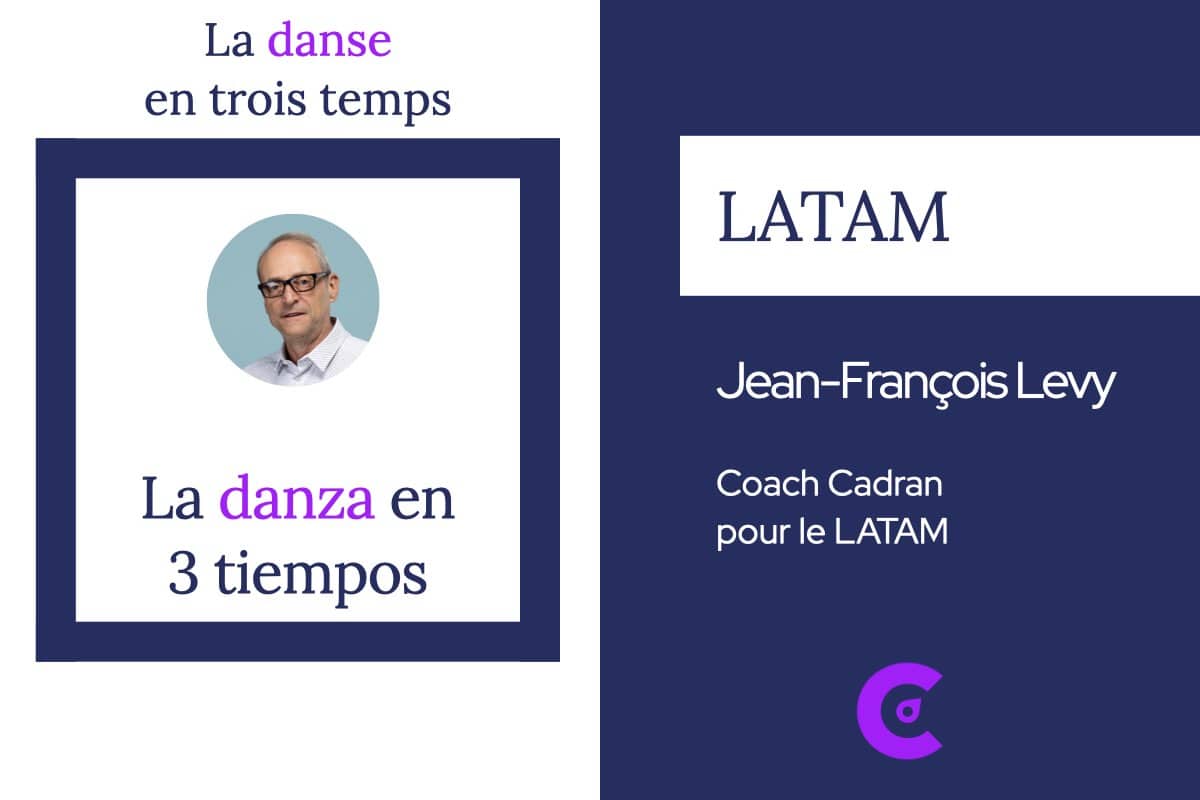A word from Jean-François – LATAM

To resolve conflict, try the 3-step dance.
Conflicts are an integral part of our lives. They arise unexpectedly, both in our personal and professional lives, at the time of important decisions as well as in day-to-day situations.
Generally speaking, conflict arises when there are divergent interests, needs or values, leading to tension or confrontation between the parties involved.
It is the attitude of the different parties that will determine the evolution of the confrontation and its eventual resolution.
In this article, I suggest a 3-step method for dealing with and resolving conflicts.
From passivity to aggression
People often adopt a competitive attitude when faced with conflict. They let themselves be tempted by the desire to “win” the discussion, even if it means becoming aggressive, verbally and even physically. Unfortunately, in this behavior, there will be a winner and a loser. And the biggest loser is the relationship, which is usually damaged by these confrontations.
On the other hand, an attitude of not wanting to enter into conflict can also be detrimental. You remain in an artificial and deceptive harmony. This passivity is generally provoked by the fear of aggressive conflict and, instead of resolving the problem, it leaves it unresolved or aggravates it. What’s more, it generates resentments and frustrations that eventually build up and may explode at an inopportune moment. The relationship is equally damaged by this false harmony.
Between these two extremes, there’s a continuum of perfectly acceptable behaviors that can help resolve the conflict. Basically, it’s important to recognize that each of the participants has different points of view, each equally valid. A bit like a couple dancing against each other. If they don’t move, each of them will only see what’s going on behind their partner’s back, but not behind their own. It’s only by dancing, twirling and moving away from each other that we’ll be able to see the other’s point of view.
So let’s dance, and to resolve a conflict, dance has 3 beats.
First step, ME.
First, it’s essential to explore our own point of view. To connect with ourselves so that we really know what we want, what we’re looking for and what we expect from the relationship.
Second step, WE.
Now it’s time to share points of view. And to do this, we must not let emotions take up too much space, and avoid toxic behaviors such as criticism, disdain, defending ourselves, victimizing or isolating ourselves, sulking.
Avoid generalities such as “always”, “never” or “as usual”. For example, if you say “You never listen to me”, you’re attacking the person, you’re being aggressive, you’re being critical. However, if you specify the moment, the context “you didn’t listen to me yesterday when I explained this or that”, it’s a complaint about a specific behavior, and no longer an attack on the person.
And before expressing our own opinion, our own point of view, let’s first listen. Let’s learn to listen sincerely, attentively and without judgment. The only way to do this is to remain silent, close your mouth and only open it to confirm that you have understood the other person’s thoughts and feelings.
Finally, when it’s our turn to express ourselves, we take care to let our own needs and feelings be heard.
Third step: THE RELATIONSHIP
The third step is to seek a common goal. We may differ on many points, but there are some on which we all agree. This common objective is the beacon that will guide the discussion. Once we are well aligned on this objective, negotiation is simplified, and we can then reach an agreement, a compromise, and above all a concrete commitment.
In conclusion, it’s important to resolve conflicts. Conflicts are what allow us to grow and help the relationship to grow. It’s the resolution process that’s important, and this must be built around a constructive attitude, with empathy and a genuine desire to reach an effective solution.
As Patrick Lencioni says: “If team members never push each other out of their emotional comfort zones during discussions, it’s very likely that they won’t make the best decisions for the organization.”

JEAN-FRANÇOIS LEVY
International Executive and Team Coaching
Jean-François Levy, International Executive Coach certifié ICF de niveau PCC, est spécialisé dans le Leadership Collaboratif. Il accompagne le dirigeant à l'international à "Prendre conscience de ses talents comme tremplin pour son épanouissement personnel et professionnel…"
Franco-mexicain de naissance, il a développé une expertise dans le développement organisationnel des PME et des entreprises familiales au Mexique, où il réside depuis 2000. Auparavant, il a exercé des fonctions de dirigeant au sein de grandes entreprises en Angleterre, en France et au Brésil, puis comme directeur des opérations au sein d'une PME familiale.
Avec plus de 30 ans d’expérience en management interculturel et la maîtrise de la Co-CREATiVE Communication®, il permet aux dirigeants d'exprimer leur style personnel de leadership tout en l’adaptant à la situation culturelle de leur organisation.





